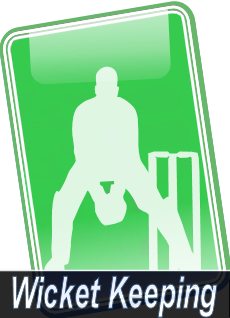Wicketkeeping in front of the stumps
My recent comments that wicketkeepers should take returns in front of the stumps caused a stir with Rob Sanderson:
"I cannot recall any instance where this tactic has been shown to be of much value. I coach a team of 14 year old average cricketers, but I have two or three kids who are capable of throwing the stumps down. The couple of times this season they have made direct hits the batsmen has been run out and on the occasions where they have been close, the wicket keeper has been in position to take the ball either side of the stumps. The idea that the keeper can judge which returns (presumably coming in fast and low) will hit the stumps and which ones won't from in front or at the side of the stumps and then let them through demands a level of judgment that is even beyond the one international keeper doing this. Conceding direct hits takes away an important element of attacking fielding."
I do agree with Rob in certain key areas, but I still feel that standing in front of the stumps is a valid tactic in the right circumstances if used correctly. Here is why:
- Most throws in club cricket are not accurate. Most club teams find fielding their weakest discipline. The norm for a throw is for it to be short or wide of the gloves. Standing in front gives the keeper more room without having to run around the stumps. Also, if the throw is weak and accurate, sweeping your hands through the line of the stumps (with your foot as a giude) is faster than waiting for the ball.
- Most successful direct hits do not have the keeper involved. For those fielders who can hit the stumps, ask yourself how often the keeper is up at the stumps for the throw. Half the throws will be at the bowlers end and the others the keeper is most likely standing back and does not have time to get in front of the stumps. When he is stood up and a direct throw is likely then he can choose to stay behind the stumps (again it's probably all he has time to do).
I see this as a club wicketkeeper tactic to account for poor throws. It certainly should not be used all the time, and would be impossible to do so anyway. The aim is not to intercept the direct hit from a good fielder or to try and get in front of the stumps only to leave the one going straight for the stumps. Neither tactic would have much success. What can and does work at club level is having the nous when to gather a ball in front of the stumps from a poor throw.
That's intelligent wicketkeeping.
Want to know the secrets of how to change a game with a moment of wicket-keeping brilliance? Pick up a copy of "Wicket-Keeping: The Ultimate Guide to Mastering the Art" and become a better keeper today.
- Login to post comments


